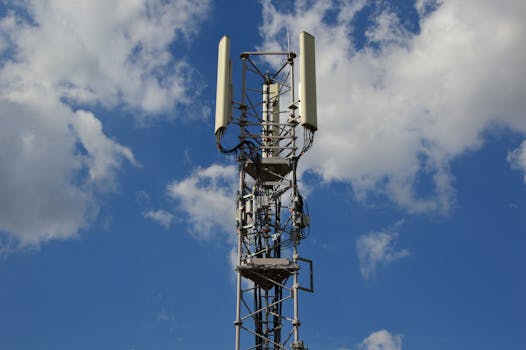GEO Satellites: Understanding the Technology and Its Applications
GEO satellites, or Geostationary Earth Orbit satellites, are a type of satellite that orbits the Earth at an altitude of approximately 36,000 kilometers. They are stationed above the equator and remain fixed in relation to a specific point on the Earth’s surface, providing a constant and reliable connection. GEO satellites play a crucial role in modern telecommunications, providing internet connectivity, broadcasting, and navigation services.
The focus keyword GEO satellites is essential in understanding the technology and its applications. GEO satellites have been in use for several decades, with the first GEO satellite, Syncom 2, launched in 1963. Since then, the technology has evolved significantly, with modern GEO satellites offering high-speed internet connectivity, high-definition television broadcasting, and precise navigation services.
How GEO Satellites Work
GEO satellites work by transmitting and receiving signals to and from Earth-based stations. They are equipped with transponders, which are devices that receive signals, amplify them, and retransmit them back to Earth. The signals are transmitted through a large antenna, which is typically parabolic in shape, allowing the satellite to receive and transmit signals to a specific region on the Earth’s surface.
The signals transmitted by GEO satellites are received by Earth-based stations, which can be located anywhere in the world. The signals are then processed and distributed to the intended recipients, whether it be for internet connectivity, television broadcasting, or navigation services.
Applications of GEO Satellites
GEO satellites have a wide range of applications, including:
Internet connectivity: GEO satellites provide internet connectivity to remote and underserved areas, where traditional fiber-optic cables are not available. They offer high-speed internet connectivity, enabling users to access online services, communicate with others, and access information.
Broadcasting: GEO satellites are used for television broadcasting, providing high-definition channels to a wide audience. They are also used for radio broadcasting, allowing listeners to access their favorite radio stations from anywhere in the world.
Navigation: GEO satellites are used for navigation purposes, providing precise location information to users. They are used in conjunction with other navigation systems, such as GPS, to provide accurate location information.
Benefits and Challenges of GEO Satellites
GEO satellites offer several benefits, including:
Global coverage: GEO satellites provide global coverage, allowing users to access services from anywhere in the world.
High-speed connectivity: GEO satellites offer high-speed internet connectivity, enabling users to access online services quickly and efficiently.
Reliability: GEO satellites are highly reliable, providing a constant and stable connection to users.
However, GEO satellites also face several challenges, including:
Signal latency: GEO satellites experience signal latency, which can cause delays in communication and navigation services.
Interference: GEO satellites can experience interference from other satellites and terrestrial systems, which can affect their performance and reliability.
Orbit congestion: The GEO orbit is becoming increasingly congested, with a large number of satellites operating in the same region. This can cause interference and collisions between satellites.
Future of GEO Satellites
The future of GEO satellites looks promising, with several new technologies and innovations being developed. Some of the trends and developments that are expected to shape the future of GEO satellites include:
High-throughput satellites: New high-throughput satellites are being developed, which will offer even faster internet connectivity and more efficient use of bandwidth.
Advanced propulsion systems: New propulsion systems are being developed, which will enable satellites to maneuver more efficiently and extend their lifespan.
Small satellites: Small satellites, also known as cube satellites, are being developed, which will offer lower costs and increased flexibility for satellite operators.
